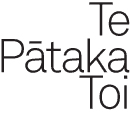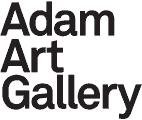Image Processors

Image Processors
Artists in the Medium – A Short History 1968–2020
Te Pātaka Toi Adam Art Gallery
14 September – 7 November 2021
Curated by Christina Barton
Featuring works by Aldo Tambellini, Richard Serra, Dara Birnbaum, Martha Rosler with Paper Tiger TV, Harun Farocki, Lisa Reihana, Megan Dunn, Ryan Trecartin and Lizzie Fitch, Wynne Greenwood and K8 Hardy, Josephine Meckseper, Mike Heynes, Arthur Jafa, and Matthew Griffin
Image Processors surveyed a history of artists’ moving-image works that take the mass media as their target. Working back in time from Australian artist Matthew Griffin’s compilation of 133 short videos, Unchained Malady, 2020 – which irreverently repurposes imagery from online news and social media– the exhibition presented a range of works that likewise appropriate found footage, restage familiar genres or scrutinise the mechanisms of the information and entertainment industries. Shaped by artist and theorist Judith Barry’s insight that ‘It is only by producing images that the subject of mass culture begins to feel some measure of control over the alienation produced by this condition” (1986), Image Processors provided a compelling bridge that links the critical aspirations of an artistic avant-garde to the manipulations and blandishments of quotidian entertainment.
In addition to the artists and estates, who we gratefully acknowledge for their assistance in bringing this exhibition together we thank: Christopher Swasbrook, Elevation Capital; Mark Williams, Circuit Artist Film and Video Aotearoa New Zealand; Ryan Moore, Fine Arts, Sydney; Emmanuel Lefrant, Light Cone, Paris; Emily Martin and Tom Colley, Video Data Bank at the School of the Art Institute of Chicago; Karl McCool, Electronic Arts Intermix, New York; Chloe Waddington, Timothy Taylor Gallery, New York; Gavin Brown, Gladstone Gallery, New York; Jane Sutherland; Kara Vander Weg, Gagosian, New York; and Katie Trainor, Circulating Film and Video Library, MoMA, New York.
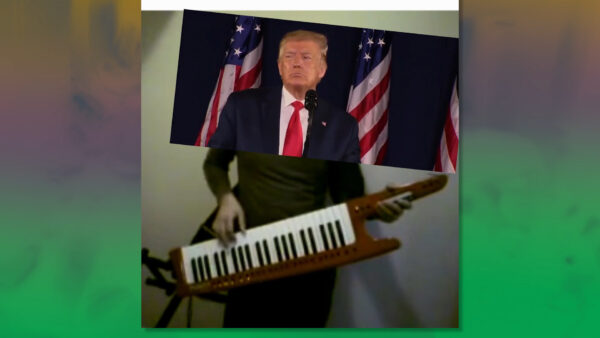
Matthew Griffin, still from Unchained Malady, 2020, 133 short videos presented on a large screen, 54:46 mins, colour/sound, private collection, courtesy the artist and Fine Arts, Sydney
Matthew Griffin (born 1976) lives and works in Sydney. He is an Australian artist working across sculpture, photography, video and installation. He completed a BFA at the Victorian College of the Arts in Melbourne in 1998. His work has been exhibited most recently at the Australian Centre for the Moving Image (ACMI, 2021), Melbourne; and at Australian Centre for Contemporary Art, Melbourne (2013 & 2009); Artspace, Sydney (2013); Hamish McKay Gallery, Wellington (2011); Hayward Gallery, London (2008); Museum of Contemporary Art Australia, Sydney (2008); The Physics Room, Christchurch (2007); and on social media platforms including Instagram and eBay. He is represented by Fine Arts, Sydney and you can follow him on Instagram @contemporaryary.
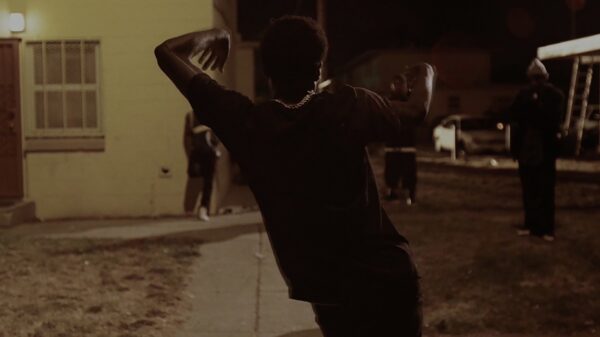
Arthur Jafa, Love is the Message, The Message is Death, 2016, digital video projection, 7:25 mins, colour/sound, courtesy of the artist and Gladstone Gallery
Arthur Jafa was born in Tupelo, Mississippi in 1960. He studied architecture and film at Howard University in Washington D.C. He is an artist making sculpture, video and installation, who has also worked as a cinematographer for filmmakers such as Julie Dash, Spike Lee and Stanley Kubrick, and has made music videos and TV advertisements. Since showing with Gavin Brown and now with Gladstone Gallery, Jafa has exhibited widely, including solo exhibitions at the Museum of Contemporary Art (MOCA) in Los Angeles (2017); the Serpentine Galleries in London (2017), and the Institute of Contemporary Art in Boston (2018). The White Album, which was shown at the Venice Biennale in 2019 and was included in the Biennale of Sydney in 2020. A major retrospective of his work is currently on display at the Louisiana Museum of Modern Art in Denmark.

Mike Heynes, still from News of the Uruguay Round, 2016, digital video projection, 2 mins, colour/silent, courtesy of the artist
Mike Heynes (born 1971, New Zealand) is a Wellington-based artist with a deep interest in and knowledge of film history and studio-based production. Known for his low-tech remakes that are crude but inventive pastiches of a wide array of film and TV genres, he demonstrates a broad skill-set in model-making, animation, robotics and other home-made special effects. Heynes has a BA in Film Studies from Te Herenga Waka Victoria University of Wellington (1997), an MFA from Whiti o Rehua School of Art, Massey University (2013), and he has just completed work for his PhD, also from Massey University. News of the Uruguay Round was first shown at Enjoy Contemporary Art Space in 2016 and again at the Auckland Art Fair in 2019. You can see more of his work on the Circuit Artist Film and Video Aotearoa New Zealand website.

Josephine Meckseper, still from 0% Down, 2008, digital video, 6 mins, black and white/sound, courtesy of the artist and Timothy Taylor, London and New York
Josephine Meckseper (born 1964, Germany/USA) is known for her explorations of the paradoxes of consumer culture, through sculpture, installation, publications and films. She studied at the Hochschule der Künste, Berlin between 1986 and 1990, and completed an MFA at the California Institute of the Arts in 1992. She describes her experience studying at CalArts in the early 1990s as “formative”, not only for the school’s strongly political and conceptual pedagogy, but also because her studies coincided with the LA riots sparked by the acquittal of police for the savage beating of African American Rodney King (in April 1992). Meckseper’s work has been included in two Whitney Biennials (2006 and 2010); the Sharjah Biennial (2011); the Taipei Biennial (2014); and the National Gallery of Victoria Triennial (2017–18). In 2007 a major retrospective of her work was organised by the Kunstmuseum Stuttgart. Meckseper’s large-scale public project, Manhattan Oil Project, was commissioned by the Art Production Fund and installed in a lot adjacent to Times Square in New York, in 2012. In 2015 her works were featured in Storylines, Solomon R. Guggenheim Museum, New York; and America Is Hard to See, Whitney Museum of American Art, New York. She is represented by Timothy Taylor, London and New York.
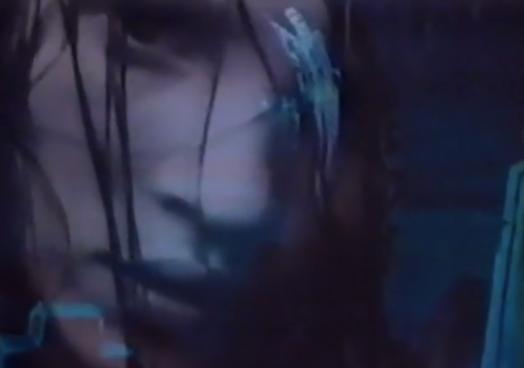
Megan Dunn, still from Obsession, 1998, video transferred to digital, 2:15 mins, colour/sound, courtesy of the artist and Circuit Artist Film and Video Aotearoa New Zealand
Megan Dunn (born 1974, New Zealand) had a brief but important career as a video artist in the 1990s. She graduated with a BFA from the Elam School of Fine Arts at the University of Auckland in 1998. At the same time she was completing her degree she established and co-directed the artist-run initiative Fiat Lux, a space in Auckland that operated between 1996 and 2000. In 2001 she left for London, and in 2006 she completed a Masters in Creative Writing at the University of East Anglia. Her writing has appeared in numerous publications including Art News, Circuit, The New Zealand Listener and The Pantograph Punch. Her book Tinderbox was published in 2017, and her memoir, Things I Learned at Art School has just been published by Penguin Books (NZ). She currently works at City Gallery, Wellington, as the Public Programmes Manager.

Lisa Reihana, still from Wog Features, 1990, single channel SD 4:3 video, 7:50 mins, colour/sound, courtesy of the artist
Lisa Reihana (born 1964, New Zealand, Ngāpuhi, Ngati Hine, Ngaituteauru) is a leading figure in the recent history of contemporary art in Aotearoa New Zealand. She is known for her largescale video installations and photographs that figure her imaginative work as a creative director overseeing costume, body adornment, choreography, sound design, camerawork and post-production, and which address Te Ao Māori both before and after colonisation. She graduated with a BFA from the Elam School of Fine Arts, Auckland University in 1987, and from the Unitec Institute of Technology in 2014 with a Masters in Design. Reihana represented New Zealand at the Venice Biennale in 2017 with the large-scale video installation in Pursuit of Venus [infected] (2015–17), which has since been shown around the world and received widespread critical acclaim. She has had solo exhibitions at the Museum of New Zealand Te Papa Tongarewa, Wellington (2008), Govett-Brewster Art Gallery, New Plymouth (2007) and Museo Laboratoria di Arte Contemporanea, Rome (2007), and has been included in major international group exhibitions including, most recently, Toi Tū Toi Ora at Auckland Art Gallery Toi o Tāmaki (2020-21); the Biennale of Sydney (2020), and Oceania at the Royal Academy, London (2018). In 2014 Reihana was awarded an Arts Laureate Award by the Arts Foundation of New Zealand, in 2015 she was awarded the Te Tohu Toi Ke Te Waka Toi Māori Arts Innovation Award from Creative New Zealand, and in 2018 she was made a member of the New Zealand Order of Merit.

Ryan Trecartin and Lizzie Fitch, still from Wayne’s World, 2003, digital video, 8 mins, colour/sound, courtesy of the artists and Electronic Arts Intermix (EAI), New York
Ryan Trecartin (born 1981, USA) and Lizzie Fitch (born 1981, USA) have been working together since the early 2000s. They are known for their non-linear films and immersive installations, in which they and their friends perform and play out a host of hyper-active characters. They met as students at the Rhode Island School of Design and Wayne’s World is one of their earliest collaborations. They have exhibited in group exhibitions and biennales all over the world since 2006. Recent major installations include Whether Line, Fondazione Prada, Milan (2019) and Any Ever, which toured from The Power Plant, Toronto, to MoCA, LA; MoMA PS1, New York; Istanbul Modern, Istanbul; MCA, Miami, and Musée d’Art Moderne de la Ville de Paris, Paris (2010–11). They live and work in Athens Ohio. Trecartin and Fitch are represented by Sprüth Magers, Berlin and Regen Projects, Los Angeles.
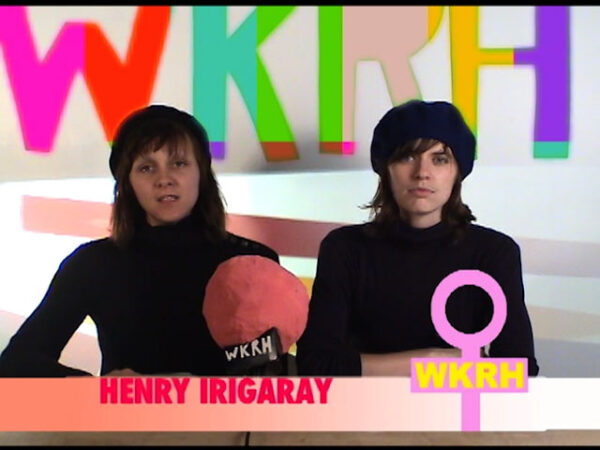
Wynne Greenwood and K8 Hardy, still from New Report Artist Unknown, 2005–6, digital video, 16:30 mins, colour/sound, courtesy of the artists and Video Data Bank at the School of the Art Institute of Chicago
Wynne Greenwood (born 1977, USA) has an MFA from the Milton Avery Graduate School for the Arts, Bard College (2004). From 1999 to 2006 she created and performed as the multimedia art-band Tracy + The Plastics, which blurred the distinctions between contemporary art and music, playing all three parts: lead singer, Tracy, and her backup singers Nikki Romanos and Cola. After this project, Greenwood shifted her focus to installation and object-based work, and has recently returned to making music and video works. Her work has been exhibited at the New Museum, New York; Reed College, Portland; Fanta Spazio, Milan; Crush Repeat, Seattle; the Whitney Biennial, NYC; The Kitchen, NYC; Susanne Vielmetter Los Angeles Projects, LA; the Henry Art Gallery, University of Washington, Seattle; and Soloway, Brooklyn.
K8 Hardy (born 1977, USA) is a video and performance artist, fashion stylist and photographer, who explores issues of race, class, economics and gender in fashion and advertising. She has a BA in Film and Women’s Studies from Smith College and an MFA from the Milton Avery Graduate School for the Arts at Bard College. Her work is included in the collections of the Whitney Museum of American Art, the Solomon R. Guggenheim Museum and the Museum of Modern Art, New York. She has exhibited and performed at the Whitney Museum of American Art, MoMA PS1, New York, Artists Space, New York, the Tate Modern, London, and Gerlie Sonja Junkers, Munich.
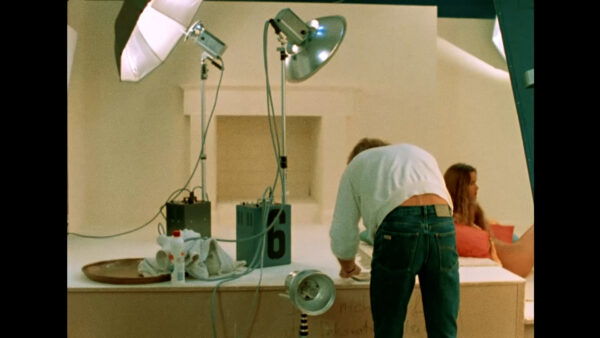
Harun Farocki, still from An Image, 1983, 16mm film transferred to digital video, 25 mins, colour/sound, courtesy of the artist’s estate and Video Data Bank at the School of the Art Institute of Chicago
Harun Farocki (1944 – 2014) is a German filmmaker who was born in 1944 in Czechoslovakia to an Indian father and a German mother. He studied at the German Film and Television Academy in Berlin from 1966 to 1968, where he was politicised by opposition to the Vietnam War and the politics of the Red Army Faction. Based in Germany for most of his career, he is known for his political essay films that re-use imagery and footage from an array of sources, as well as “fly on the wall” cinematography. Directing more than 100 films and staging several multi-screen installations, he analysed the powers of the image and openly confronted subjects such as war, revolutionary uprisings, and capitalist exploitation. He also worked as a critic, editor (Filmkritik magazine, 1974–1984), theorist and curator. From 1993 to 1999, Farocki taught at the University of California, Berkeley, and was a Professor at the Academy of Art, Vienna from 2006 to 2011.
In 2014, to acknowledge his death at the age of 70, Adam Art Gallery screened three of his films in a one-night programme curated by Laura Preston in partnership with Goethe-Institut New Zealand. Since then, Farocki’s contribution has been widely celebrated with retrospectives at The Neuer Berliner Kunstverein (Harun Farocki: Mit anderen Mitteln – By Other Means, 2017), Centre Pompidou (Harun Farocki Retrospective, 2017) and The National Museum of Modern and Contemporary Art, Korea (Harun Farocki Retrospective, 2018).
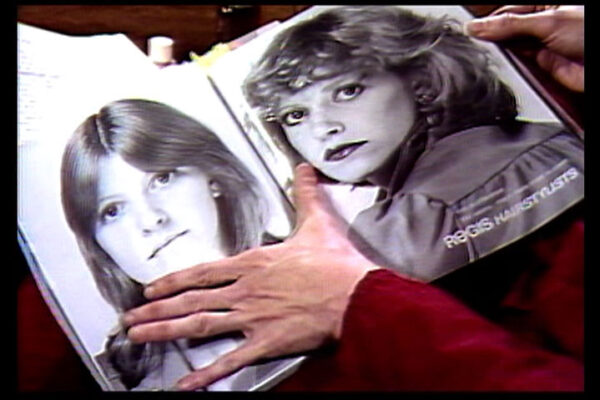
Martha Rosler, with Paper Tiger Television, still from Martha Rosler Reads Vogue: Wishing, Dreaming, Winning, Spending, 1982, video transferred to digital, 25:22 mins, colour/sound, courtesy of the artist and Video Data Bank at the School of the Art Institute of Chicago
Martha Rosler (USA) is determinedly political artist who uses photography, video, text, performance and installation to expose and challenge the processes by which meaning is made, enforced, de- and re-constructed. Her work in all its forms is addressed to the powerful systems that control everyday life and perpetuate social and economic inequity. She has also published several books of photographs, text and commentary on public space, ranging from airports and roads to housing, homelessness and gentrification. Her work has been the subject of a major travelling retrospective, Positions in the Life World (1998-2000), shown in Birmingham, Vienna, Lyon/Villeurbanne, Barcelona, Rotterdam and New York, as well as a number of solo exhibitions around the world. A restaging of her exhibitions from the 1970s was held at the Museum of Modern Art, New York, in 2012 (the Meta-Monumental Garage Sale). In 2018 the Jewish Museum in New York presented Martha Rosler: Irrespective, a survey exhibition showcasing her five-decades’ long practice from the 1960s to the present. A collection of Rosler’s writings, Decoys and Disruptions: Selected Writings, 1975–2001, was published by MIT Press in 2004 and she regularly contributes to Artforum, e-flux journal and Texte zur Kunst. Rosler still lives and works in Brooklyn, New York.
Paper Tiger Television was founded by Dee Dee Halleck in 1981 in Brooklyn, New York. It is a non-profit video collective dedicated to raising media literacy and challenging corporate control over mainstream media. Still operating today, it continues to produce material for public access media as well as providing a library of tapes addressed to a variety of social justice causes and training for non-professionals to learn the necessary skills of media activism.

Dara Birnbaum, still from Technology/Transformation: Wonder Woman, 1978/79, video transferred to digital, 5:50 mins, colour/sound, courtesy of the artist, Marian Goodman Gallery, New York and Paris, and Video Data Bank at the School of the Art Institute of Chicago
Dara Birnbaum (born 1946, USA) is a video and installation artist whose remixes of mainstream television and other mass media are critical contributions to the history of video art and feminist art history. She has a BA in Architecture from the Carnegie Mellon University in Pittsburgh (1969) and a BFA in painting from the San Francisco Art Institute (1973). Her work has been widely exhibited at MoMA PS1, New York (2019); National Portrait Gallery, London (2018); Cleveland Museum of Art, Ohio (2018); South London Gallery, UK (2011); major retrospectives at the Serralves Foundation, Porto (2010) and S.M.A.K. Stedelijk Museum voor Actuele Kunst, Ghent (2009); Center for Contemporary Art, CCA Kitakyushu (2009); Museum of Modern Art, New York (2008); Kunsthalle Wien, Vienna (2006); and The Jewish Museum, New York (2003). She has been included in several group and survey exhibitions, such as documenta 7, 8, and 9; WACK! Art and the Feminist Revolution, MoCA, Los Angeles (2007), and The Pictures Generation, 1974–1994, Metropolitan Museum of Art, New York (2009). In 2016 she was recognized and honoured for her work by The Kitchen, New York, and she has received numerous awards including: The Rockefeller Foundation Bellagio Center Arts Residency (2011); a Pollock-Krasner Foundation Grant (2011); and a United States Artists Fellowship (2010). She was the first woman in video to receive the prestigious Maya Deren Award by the American Film Institute, in 1987. Dara Birnbaum lives and works in New York where she teaches at the School of Visual Art. She is represented by Marian Goodman Gallery, New York and Paris.

Richard Serra, still from Television Delivers People, 1973. New York, Museum of Modern Art (MoMA). Video (color, sound). Duration: 6 min. Producer: Carlota Schoolman, the artist. Acquired through the generosity of Barbara Pine. Acc. no.: 447.1975. © 2021. Digital image, The Museum of Modern Art, New York/Scala, Florence
Richard Serra (born 1938, USA) is best known for his large minimalist sculptures, though he has worked in performance, video art, printmaking and drawing. Considered one of the most significant artists of his generation, his site-specific sculptures for architectural, urban and landscape settings can be found across the globe, including New Zealand (Te Tuhirangi Contour, 1991/2001, located at Gibbs Farm, Auckland). He graduated with a BA in English Literature at the University of California Santa Barbara in 1961, where he also studied art while supporting himself by working in steel mills, which largely influenced his later sculptures. He then completed an MFA at Yale University from 1961 to 1964. He began showing with Leo Castelli in 1968. Serra’s works have been included in biennales, at documenta, and in major solo exhibitions in the USA and Europe. He is a recipient of the J. Paul Getty Medal (2018) and he has also been honoured by Republic of France (2015); Architectural League of New York (2014); Spain (2008); Federal Republic of Germany (2002); and the Venice Biennale (2001). Richard Serra is represented by Gagosian, New York.
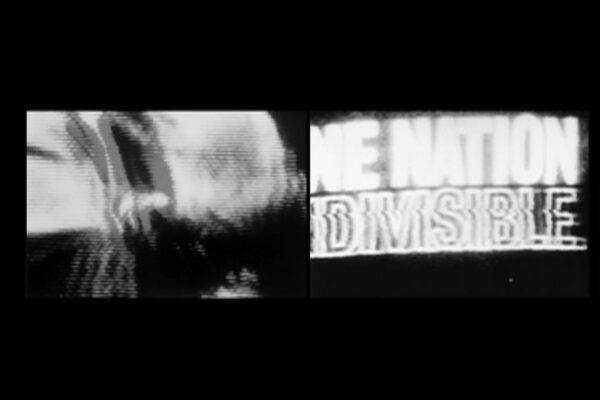
Aldo Tambellini, still from Black TV, 1968–69, 16mm film transferred to 4K single channel digital video, 10 mins, black and white/sound, courtesy of Aldo Tambellini Art Foundation and Light Cone, Paris
Aldo Tambellini (1930–2020) was an Italian-American artist and a pioneer of electronic intermedia. His experimental works in television and video art in the early 1960s were coupled with radical political ideas. These led him away from conventional media and contexts, to content that addressed the social, cultural and political upheavals of the era, and forms that synthesised visual art, poetry, music and dance into immersive installations he termed “electromedia”, that were staged in the streets, churches and theatres of New York’s East Village. A distinctive feature of his practice was his exclusive commitment to the colour black, which he argued, in a manifesto written in 1967, was a primal state or condition from which consciousness expands to encompass what he called a “New Reality”. Between 1976 and 1984, Tambellini was a fellow at the Center for Advanced Visual Studies at the Massachusetts Institute of Technology, where he experimented with his students in alternative forms of documentary, collaborative film-making and live broadcast. Largely forgotten by the art world through the 1990s, Tambellini’s work has enjoyed a revival recently. His work was revisited at the Tate Modern in 2012 (Restaging Black) and included in the 2015 Venice Biennale. In 2017, a retrospective of his work was held at the ZKM Center for Art and Media Karlsruhe. Tambellini died aged 90 in 2020.
Theo MacDonald speaks with Christina Barton, about Image Processors on 95bFM’s Artbank show. Their conversation begins at about 59 minutes at the link here.
Image Processors Public Programme pdf.
Image Processors Media Release pdf.
Documentation of the exhibition pdf.
